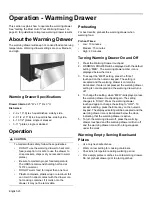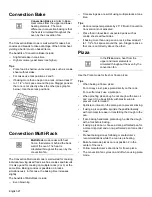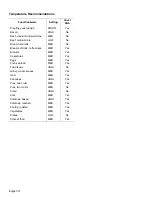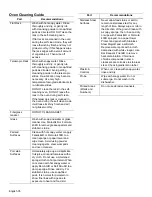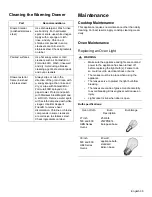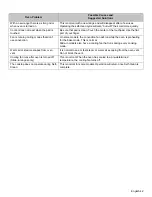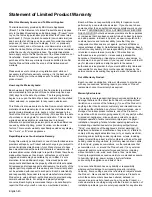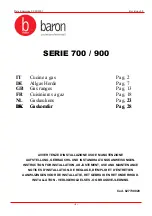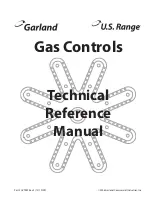
English 29
In addition to the benefits of standard broiling, convection
broiling is faster.
Tips:
•
Preheat oven 3–4 minutes. Do not preheat for more
than 5 minutes.
•
Steaks and chops should be at least 1 1/2" thick.
•
Use a broil pan and grid, or a deep pan with a metal
rack, for broiling.
•
Do not cover the broil grid with foil. It is designed to
drain fats and oils away from the cooking surface to
prevent smoking and spattering.
•
Turn meats once during the recommended cook time.
Fish does not need to be turned.
•
Never use heat-proof glass (Pyrex ®); it cannot tolerate
the high temperature.
•
For Convection Broil times, refer to the Meat/Poultry
Cooking Chart.
Proof Dough
•
No preheat is necessary.
•
Proofing is the rising of yeast dough.
•
The Proof Dough mode temperature range is 85 ºF to
125 ºF.
•
The default temperature in the Proof Dough mode is
100 ºF.
•
Loosely cover the bowl or pan and use any rack that
accommodates the size of the container.
•
Keep the oven door closed and use the oven light to
check the rising of the dough.
Warm
•
Use the Warm mode to keep cooked foods hot (for up
to one hour) until ready to serve.
•
Warm mode temperatures are 150 ºF to 225 ºF.
•
The default temperature in the Warm mode is 170 ºF.
•
Foods that must be kept moist should be covered with
a lid or aluminum foil.
$
In
Proof Dough
, the oven uses the
lower element to maintain a low
temperature to proof bread or other
yeast doughs.
%
In
Warm
, the upper and lower
elements maintain a low temperature
in the oven cavity in order to keep
food at serving temperature.
9
CAUTION
When using Warm mode, follow these guidelines:
•
Do not use the Warm mode to heat cold food.
•
Be sure to maintain proper food temperature.
The USDA recommends holding hot food at
140 ºF or warmer.
•
DO NOT warm food longer than one hour.









